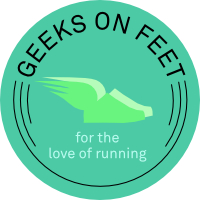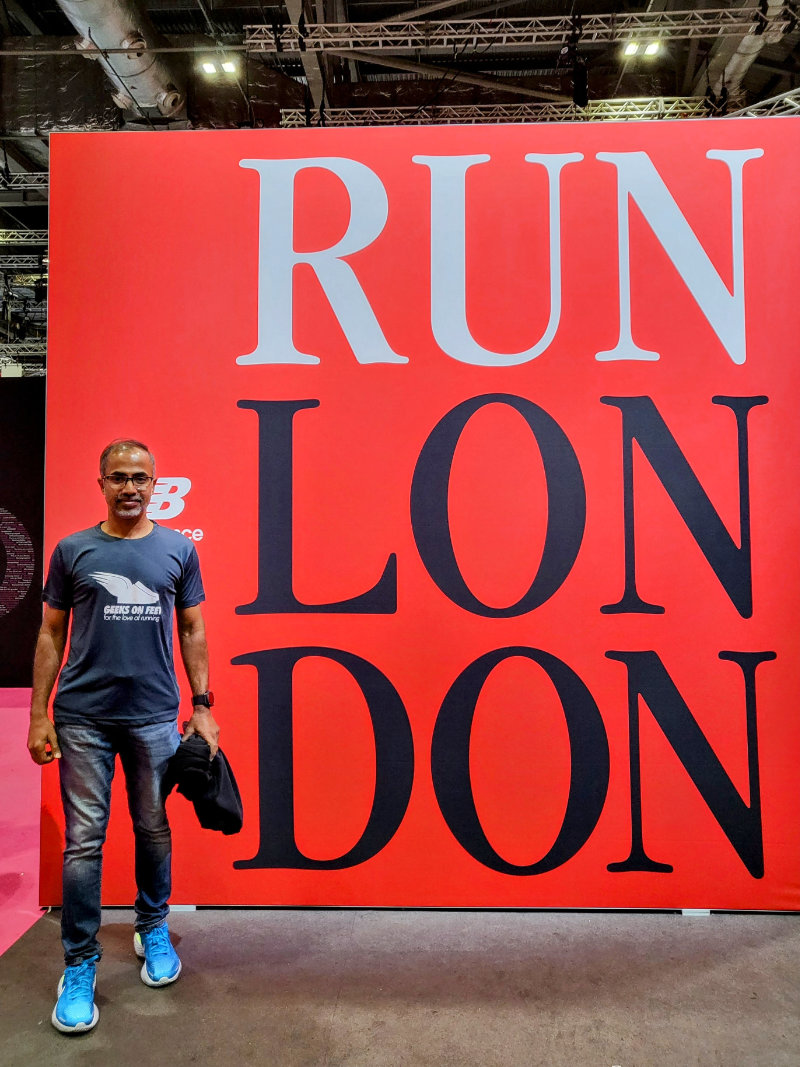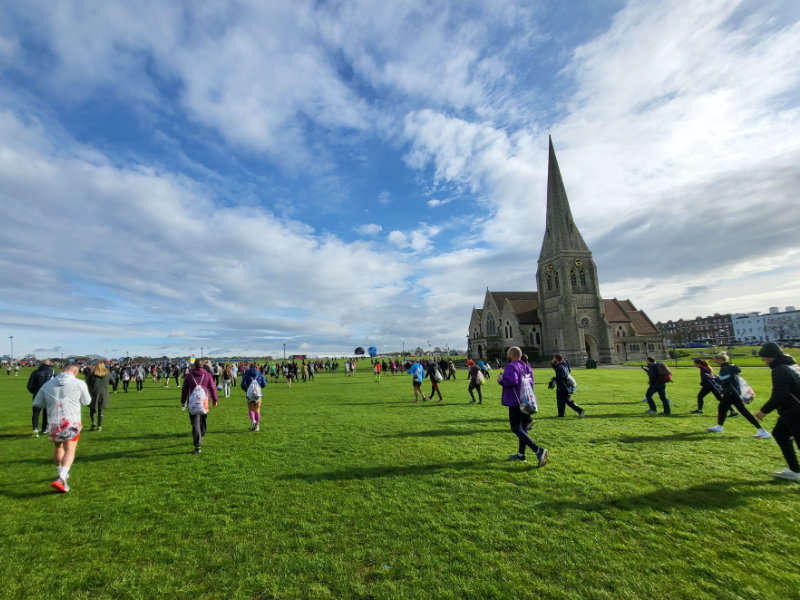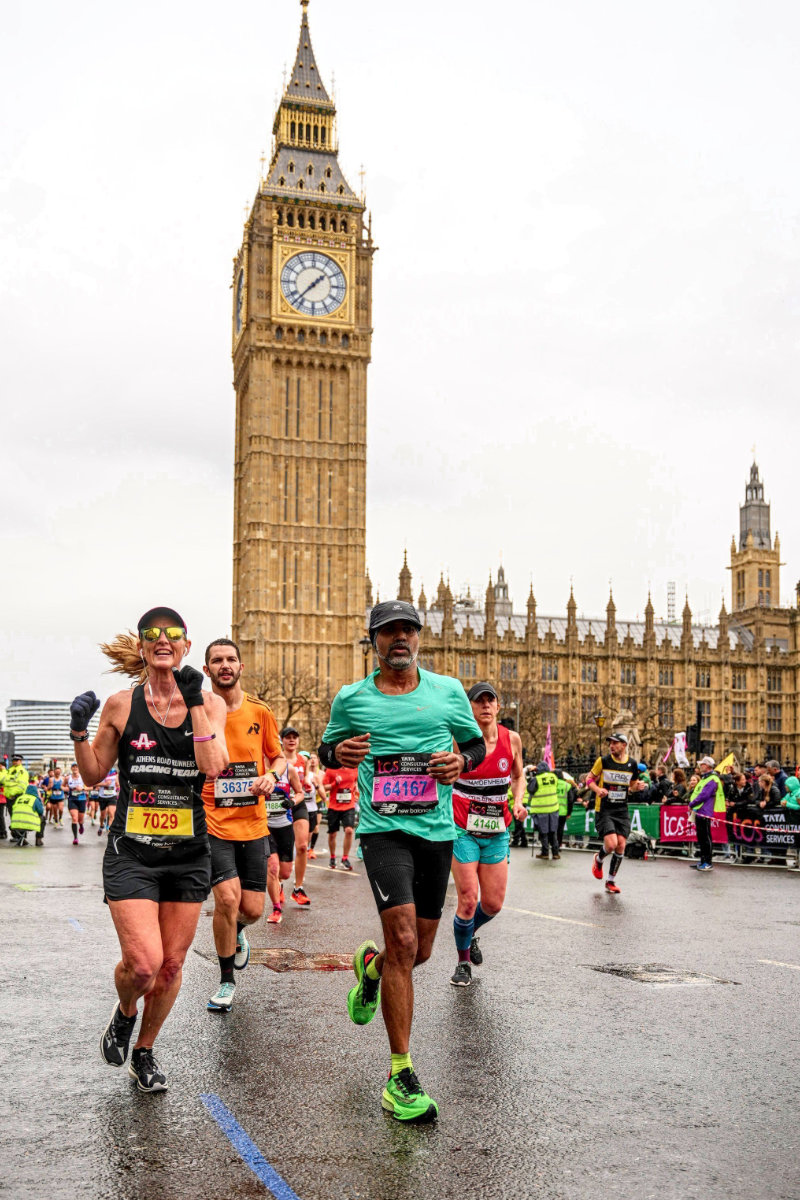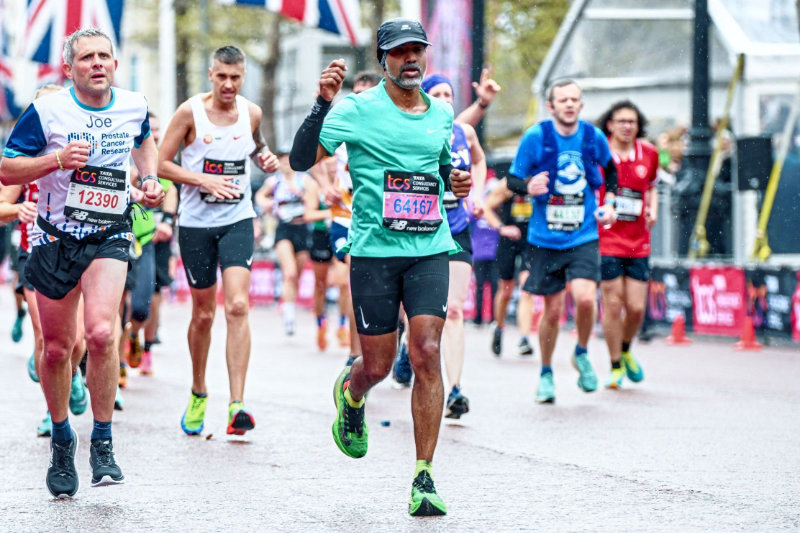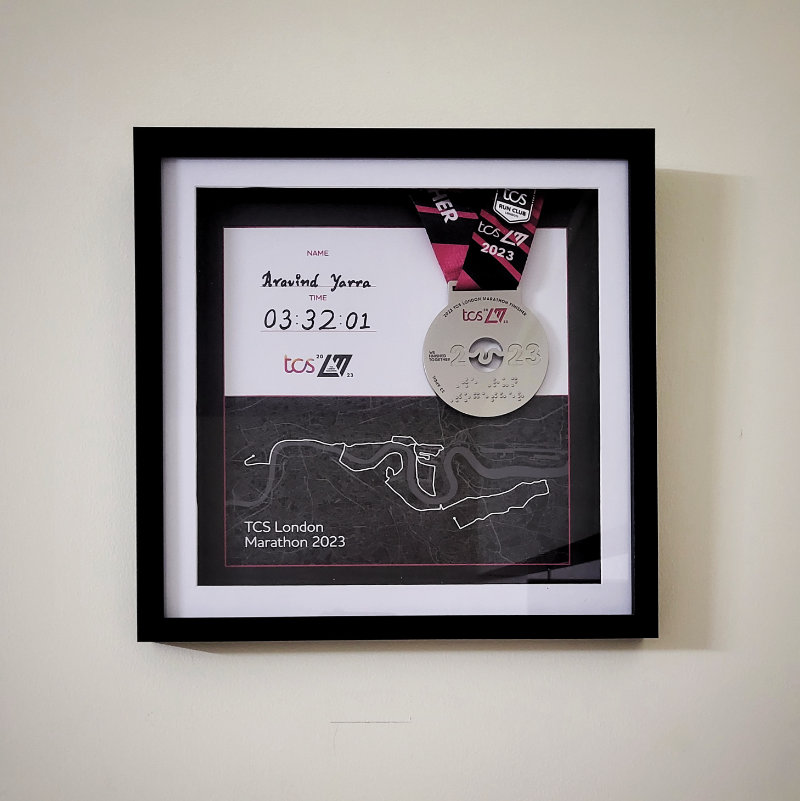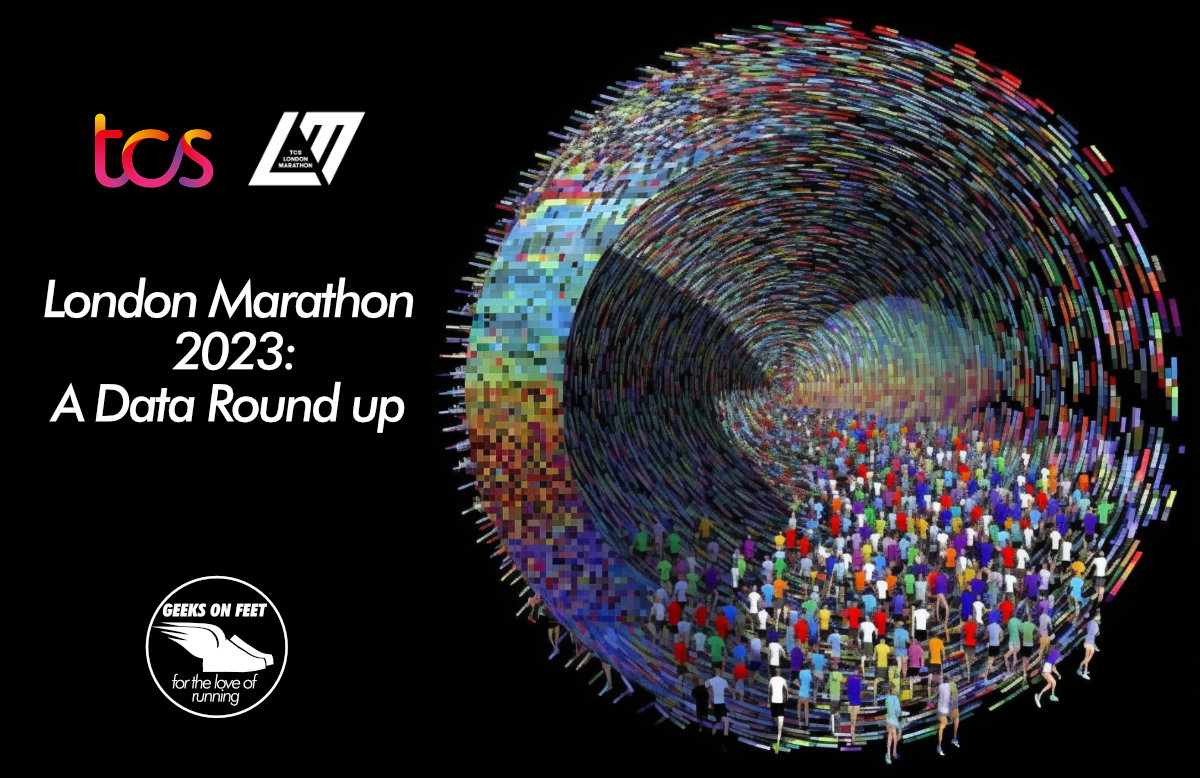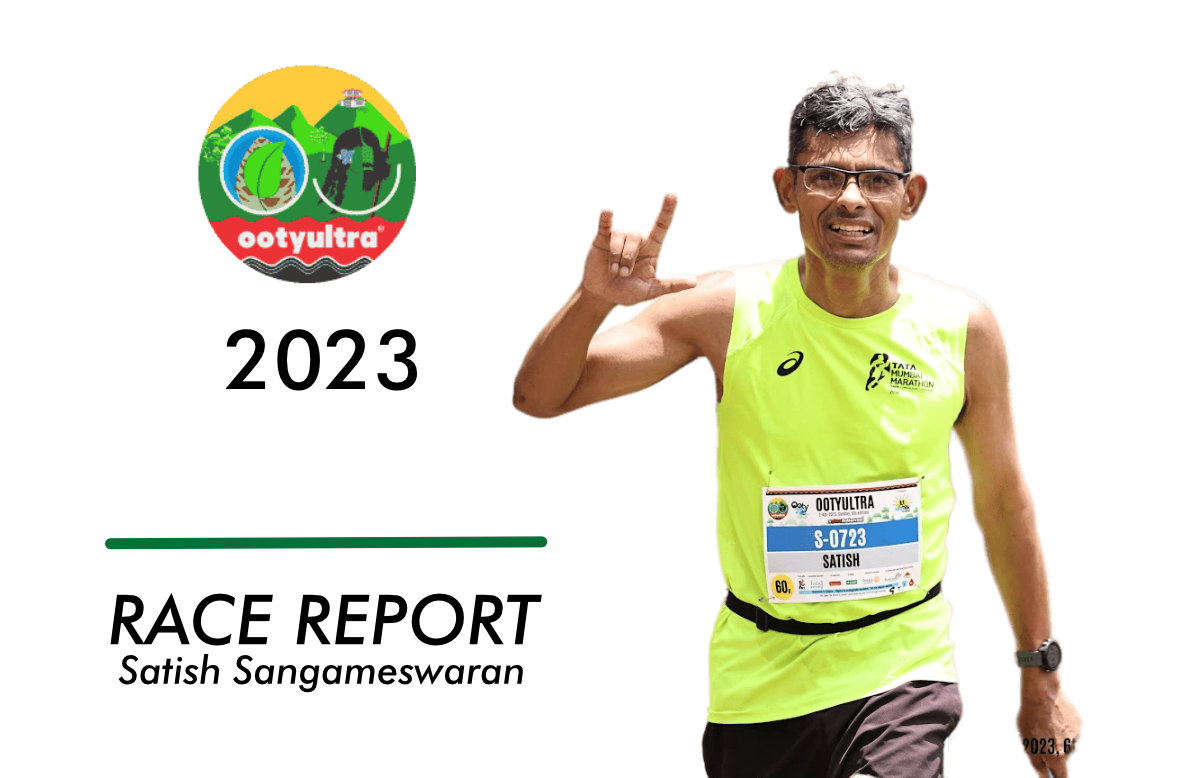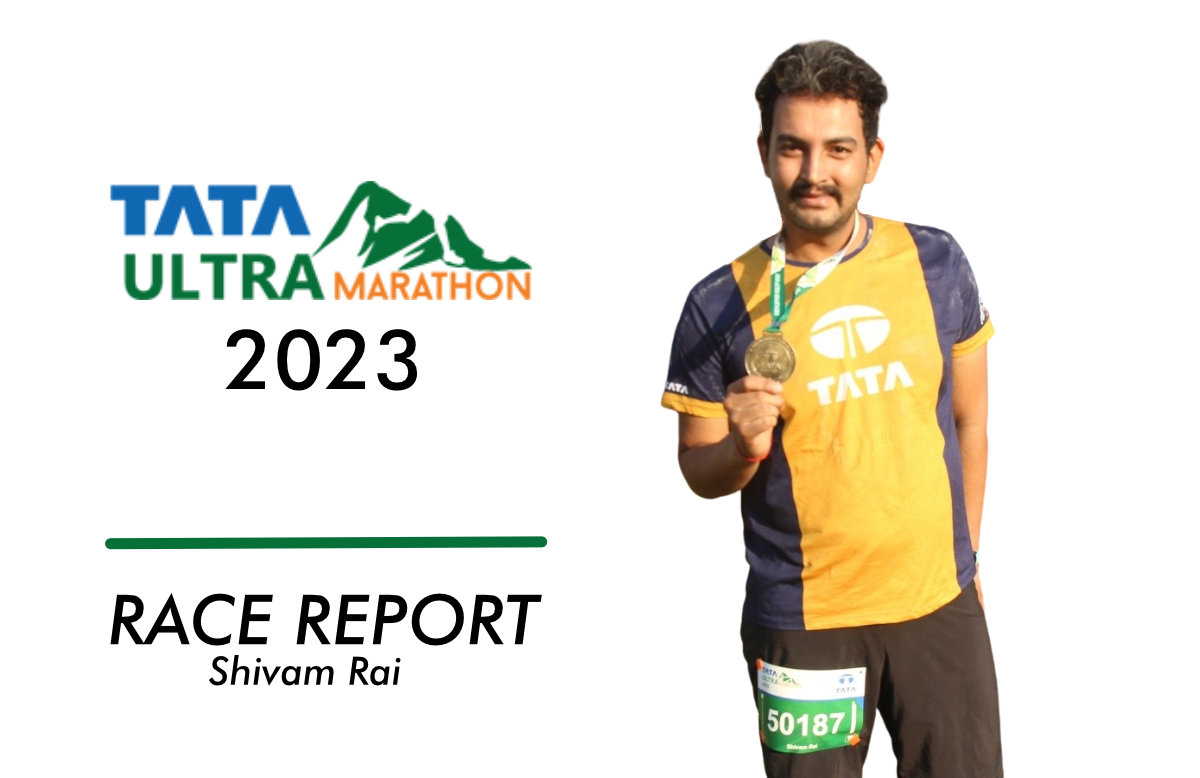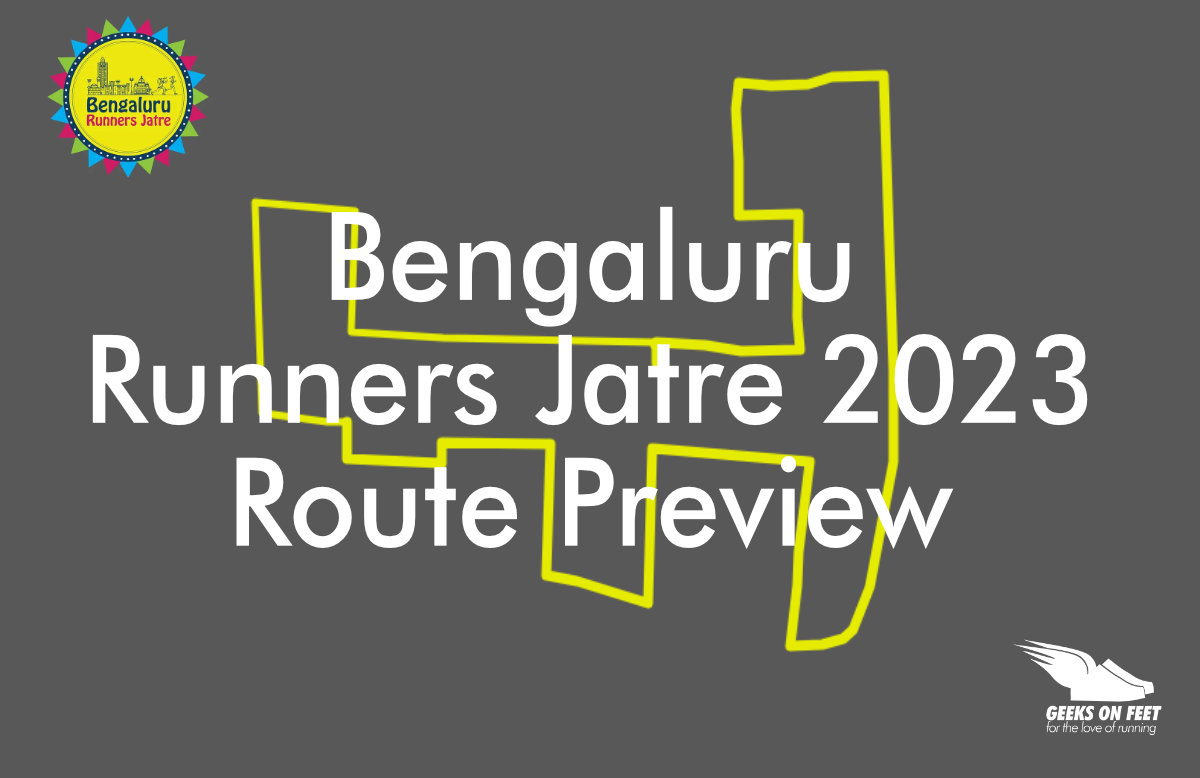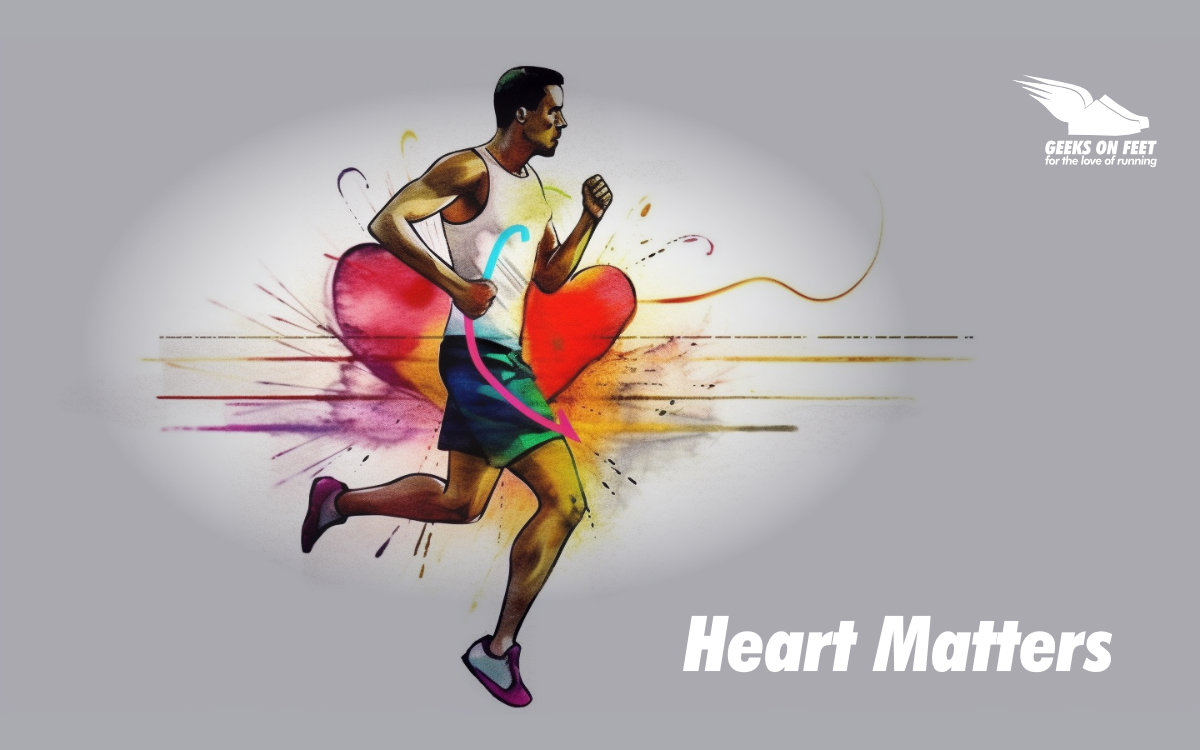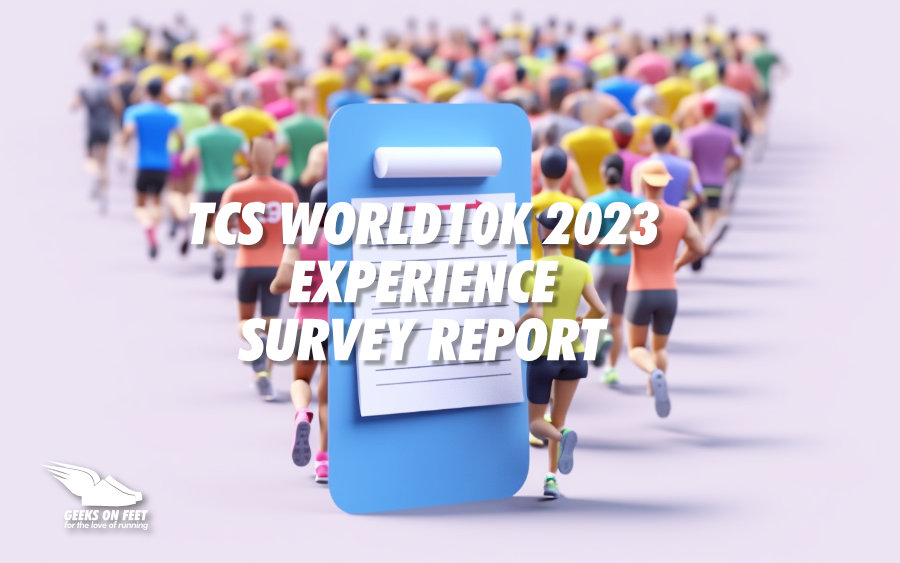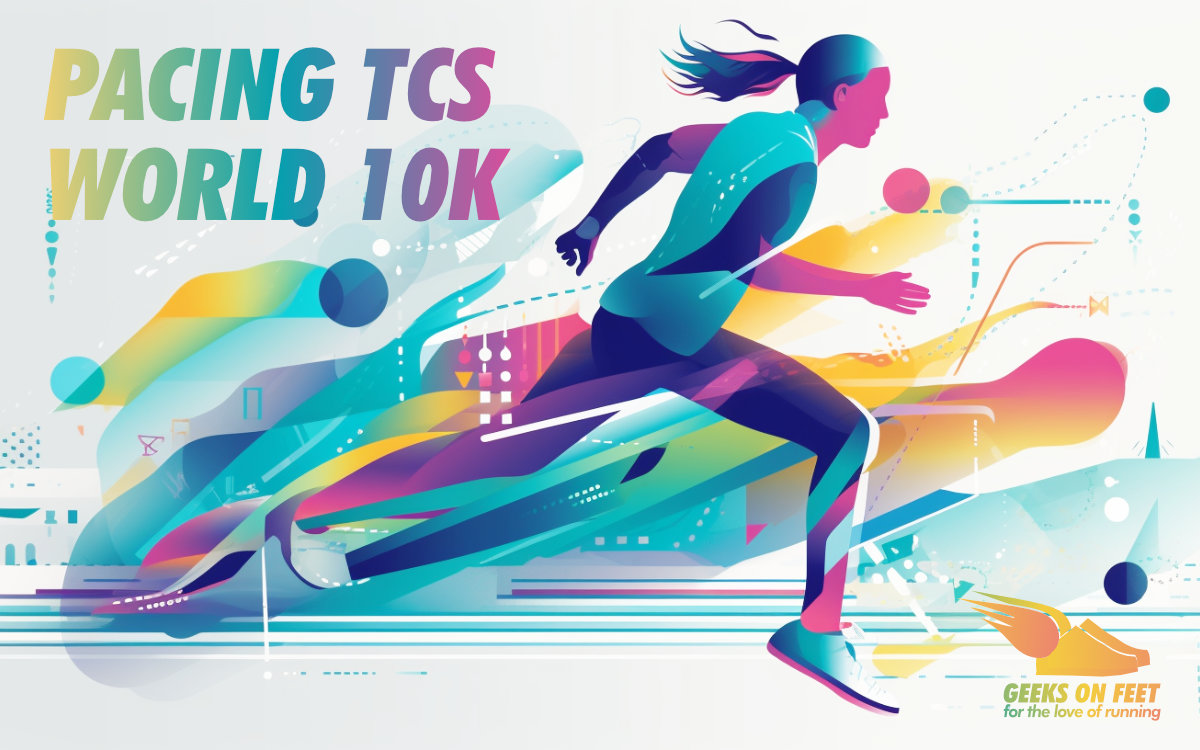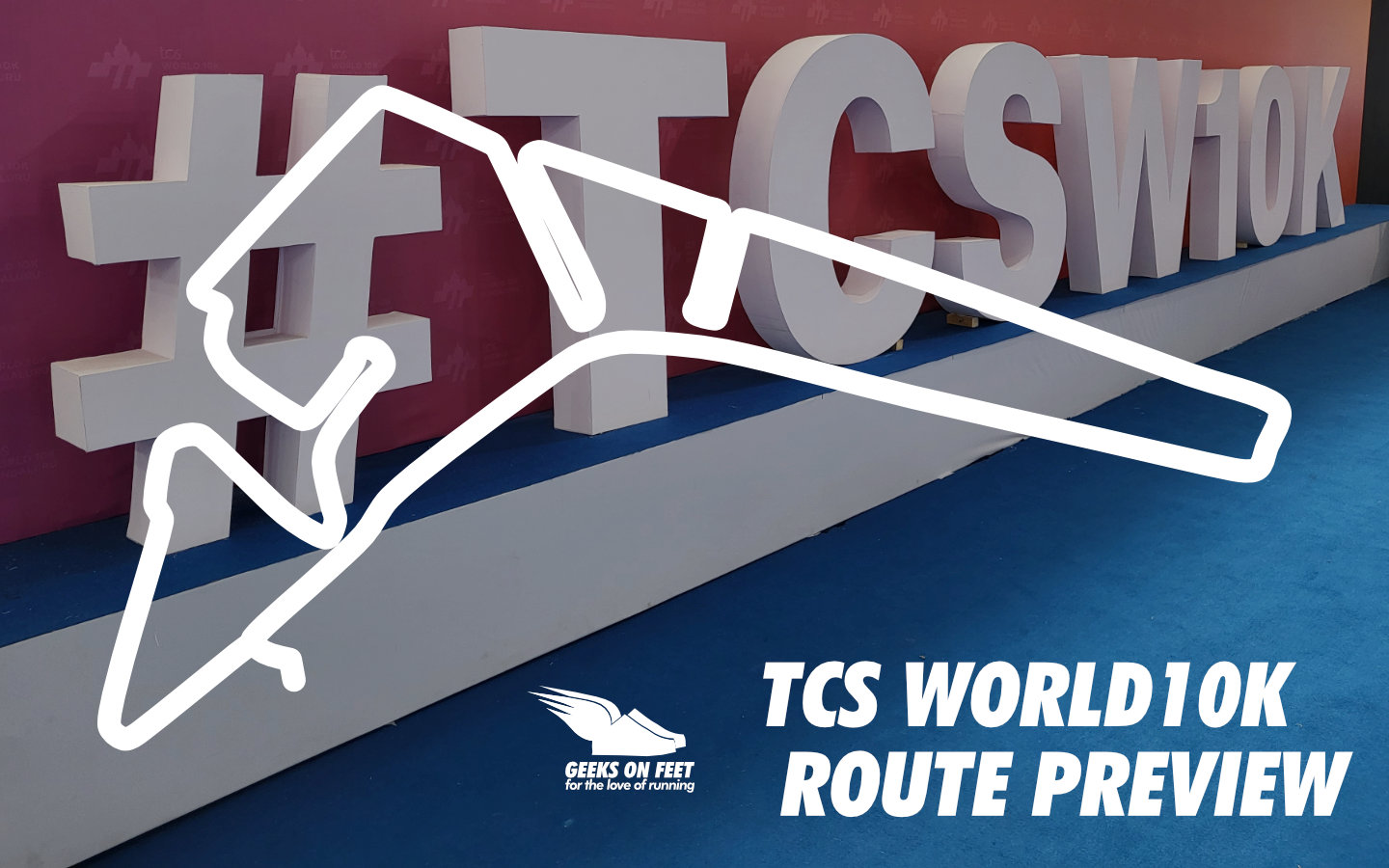Race Report: TCS London Marathon 2023
Race report of TCS London Marathon 2023 by Aravind
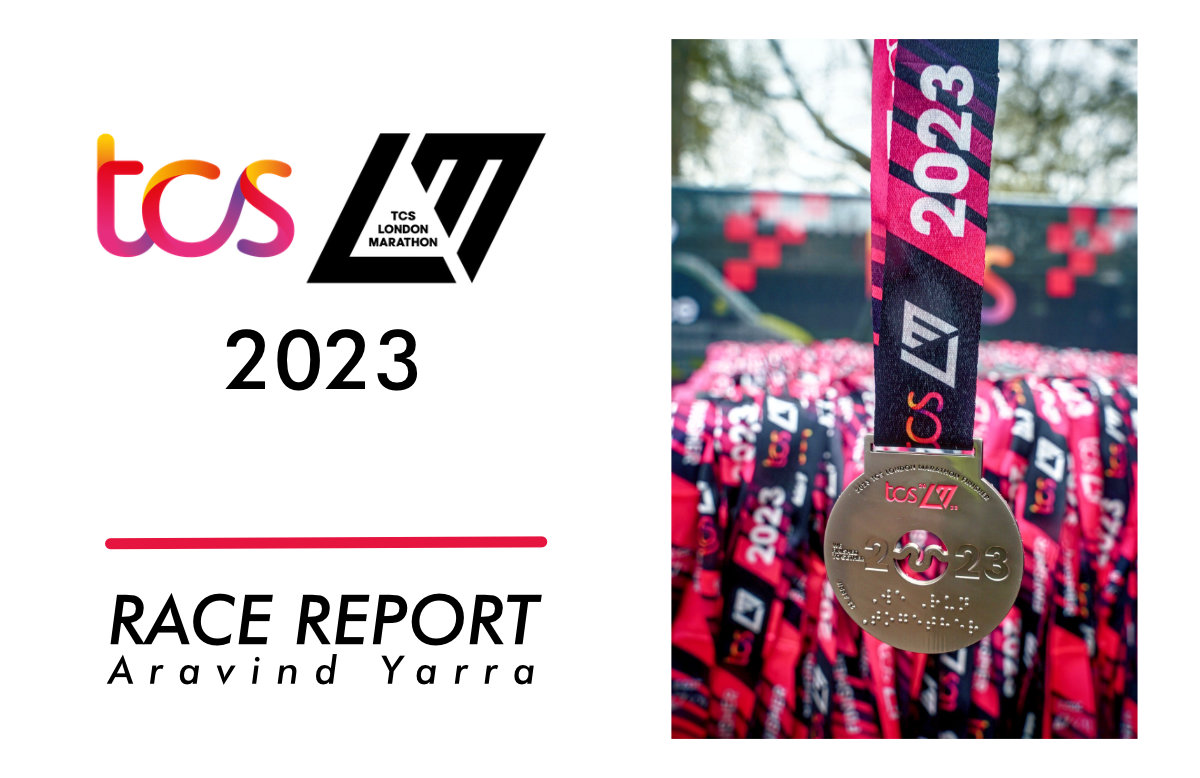
With 48,000 finishers, TCS London Marathon is one of the biggest marathons. In its 43rd edition, it is one of the hardest to get an entry. I have been trying to get through the lottery without success, and jumped at the opportunity when I got it this year. This is the first World Marathon Major for me.
As I started training for London Marathon 2023, I had two goals in mind:
- Finishing the race in 3 hours 30 minutes
- Running a strong race after 20 miles.
I was reasonably confident about the pace goal. The biggest challenge I had was to run a strong race without slowing down because of muscle cramps, as I have faced cramping in all my marathon distance runs so far.
Date: 23 April 2023
Start time: 10 AM
Start point: Black Heath, London, UK
Net Elevation: 138m ascent, 165m descent
Goals:
- Goal: 3h:30m
- Achieved : 3h:32m:01s
Training
I had tried many things in the past to prevent cramps including electrolytes, hydration, and gels that specifically meant to act against cramps (contain vinegar and other ingredients). However, none helped. The only other option I had left to train was the higher mileage and simulate the race conditions more in training.
I was a low mileage runner with a peak of 80km/week during the marathon cycles. So, when I decided to run a high mileage plan, recovery was a big scare. I started building the mileage gradually starting the first week of December, and surprisingly I’ve adapted quickly. To figure out the baseline training paces, I ran the Vizag Marathon (half distance).
I had put together a 18 week plan based on Pfitz 18/70 (Advanced Marathoning). I’ve customized it to fit my schedules and my recovery. For example, I couldn’t do as many morning and evening runs, and rather preferred morning only runs. I’ve also added more 22 milers than prescribed in the original. I’ve also reduced the prescribed intensities of VO2 max work.
The training plan included 5 week (4+1) cycles with a typical mileage upwards of 110 km, and a recovery week. Each of the training weeks had a couple of midweek medium long runs, tempo runs, weekend long runs, and plenty of recovery runs. For better recovery, I’ve increased protein in-take, and added amino acids post the longer runs (Fast&Up Recover).
During the race prep cycle, I have run the Delhi Marathon (half distance), and One 8 run (18km) as tune-ups. I’ve tried the typical race routine including pre-race and in the race fueling in these races. The final week before I started tapering down, I ran a 24 miler at a slower pace (-20s from the goal pace). This run was a big confident booster, as there were no cramps, the pace felt very easy.
I had a 3 week taper cycle from the race day, and much of the training then was short and easy with a bit of VO2 max work. I got a deep tissue massage done 2-weeks before the race.
Pre-Race:
I flew out to London three days before the race to ensure my sleep schedule wasn’t affected. On Friday, I visited the expo. The expo was massive and took me about 3 hours to just see the interesting stalls. I had the opportunity to try different running shoes,including Hoka, New Balance (sponsor of the event), and ON. The expo also had a lot of nutrition and fueling options, including Fast&Up, Gu, Maurten, and SIS. Good to see the make in India brand Fast&Up on the big stage. Kit collection process was super impressive, and I was in and out in just a few minutes.
Race Day - Before Start
The course was flat with a few rolling sections, so there were not many challenges I expected on the course. The only scare was the weather, which was predicted to rain. On the race day, the weather was quite chilly with a temperature of 6-8 degrees and it was also raining. Choosing what to wear was a real challenge for me. However, after much consideration, I finally decided to wear my running rain jacket that I had purchased from Decathlon the previous day, along with a cap and a headband wrapped around my ears to keep myself warm. I was in a Nike Running t-shirt, Aeroswift tights, and Decathlon Running Arm sleeves. While I could carry gels in my pockets, I’ve used Decathlon’s fuel belt which I felt is more convenient to take the gels out.
To get to the starting point, I took the train from Tower Bridge station to Black Heath. The train was packed with other participants who were all ready to take on the challenge of the marathon.
As per the pre-race routine, 3 hours before the start, I had MTR Ready to eat Poha which I trained with. Two hours before the race, I had a couple of bananas. I took Fast&Up Activate (L-Carnitine & L-Arginine) an hour before the race and also a Maurten 320 Drink mix. I sipped on Fast&Up Reload Electrolytes till the race started.
Interestingly, the London Marathon has 3 different start points: Red, Green, and Blue, and runners merge into a single route a few kilometers into the race. I was in the Blue start, wave 3. Before the race, I made sure to do my mobility & activation routine and warmed up my muscles.
Race Day
I was in a very good frame of mind at the start, brimming with confidence from all the training that I had, and prep I did about the course by talking to earlier finishers and the youtube videos.
As soon as the race started, I threw away the rain jacket, as the drizzle was manageable and carrying extra weight didn’t seem a good idea. The rain didn’t bother me much because of the hat. The headband over my ears helped me to manage the colder weather (about 7-8 centigrade).
As for the pacing during the race, my plan was mainly to maintain a controlled pace (with a 3h:29m goal with a minute buffer) with even splits, and push if possible in the last 10 kilometers. A lapse in judgment, I had too much hydration (pre-race) in cold weather. I had to take a loo break on the 17th kilometer because I lost a minute. At that point, I was still on target to finish. I finished the half-way distance in 1 hour and 44 minutes comfortably.
As for my fueling strategy, I took the breaks with increasing frequency. I took gels every 7km (35 minutes) till the halfway point, and then increased the frequency to 5km (about 25 minutes) as I got closer to the finish. I took gels at the 7th, 14th, 20th, 26th, 31st, and 36th kilometers. I used Fast&Up non-caffeine gels for the most part (Zesty Lemon & Classic Vanilla), except the last one which was caffeine based (Strawberry Banana). I had a spare one to take at the 39th kilometer, but I couldn’t pick it up from the fuel belt as my fingers were numb with cold. I did run with a water bottle for the most part of the run, and drank to thirst.
Conditions started to get tricky around the 29th and 30th kilometers, when my GPS watch went haywire due to the tunnels and tall buildings in Canary Wharf. This threw me off my rhythm and focus, and the rolling hills at this point didn’t help either. My glutes, calves and quads started to get stiffer.
| Split | Time Of Day | Time | Diff | min/km | km/h | Place |
| 5K | 10:36:12 | 00:24:24 | 24:24 | 04:53 | 12.30 | – |
| 10K | 11:00:43 | 00:48:55 | 24:31 | 04:55 | 12.24 | – |
| 15K | 11:25:23 | 01:13:35 | 24:40 | 04:56 | 12.16 | – |
| 20K | 11:50:57 | 01:39:08 | 25:33 | 05:07 | 11.74 | – |
| Half | 11:56:26 | 01:44:38 | 05:30 | 05:01 | 11.97 | – |
| 25K | 12:15:36 | 02:03:47 | 19:09 | 04:55 | 12.23 | – |
| 30K | 12:40:52 | 02:29:04 | 25:17 | 05:04 | 11.87 | – |
| 35K | 13:06:36 | 02:54:48 | 25:44 | 05:09 | 11.66 | – |
| 40K | 13:32:29 | 03:20:40 | 25:52 | 05:11 | 11.60 | – |
| Finish | 13:43:49 | 03:32:01 | 11:21 | 05:11 | 11.60 | 7403 |
After the 32nd kilometer, I began to slow down by about 5 seconds per kilometer, and my goal time started to slip away from me slowly. I tried to push through, but the fear of cramps that plagued me in previous races kept playing in my mind. I didn’t want to take any risks and played it safe, and touched the finish line in 3h:32m:01s. A personal best of 8 minutes from my earlier race at Amsterdam in October, 2022.
Post Race
The finisher medal was stunning. TCS has been a fantastic host, and the start and finish line experience is the best I’ve ever seen. A beautiful wall frame from TCS is a bonus.
Overall, the race was a mixed bag of emotions. I was happy as I managed to finish well with no cramps and a personal best time. There was also this feeling of disappointment because I couldn’t achieve my goal time, despite it being in my sight through the race.
As per the race, the number of runners was overwhelming to me. From the start to finish there is not an inch of free space. Despite the rain, the course was beaming with crowd cheering. Never seen anything like this so far. I would definitely love to race the London marathon again.
Key Stats
- Overall Pace: 5:01 mins/km
- Rank: 9128
- Category Rank: 1072 (45-49)
- Gender Rank: 7403
- Heart Rate: 151 bpm (Average); Zone 3 (80%) & Zone 4 (20%)
Link to My Strava Activity Link to My Garmin Activity
What’s next?
Looking ahead to the next goals, my plan is to continue working towards achieving a 3:20 marathon finish over the next 12 months. I haven’t yet decided on my race calendar, but I’ll start working on it after taking a few weeks off to recover.
One of the key things I’ve learned from this experience is the importance of easy miles. Now that I’m comfortable with longer mileage weeks, I’m hoping to continue building my aerobic endurance, and using that as the foundation for further improvement.
Also, I will probably run a few non-goal marathons to master the finishing miles. Another area I want to focus on is resuming my strength regime and addressing some of my mobility quirks, particularly the asymmetry in my hip mobility.
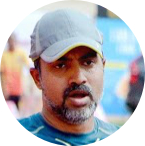
Aravind is a techie, running geek, and a marathoner. He is a CrossFit Level 1 Trainer. He loves all things technology and technology in running, with special interest in running form analysis.
